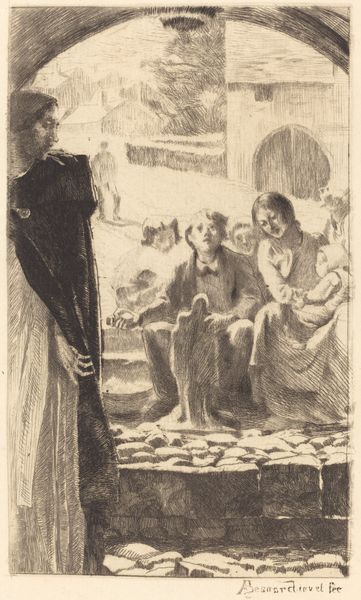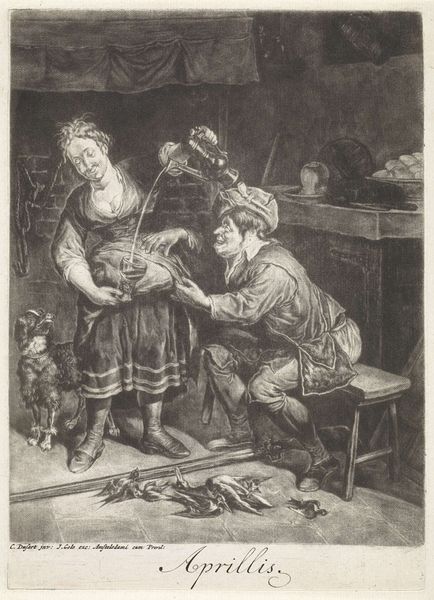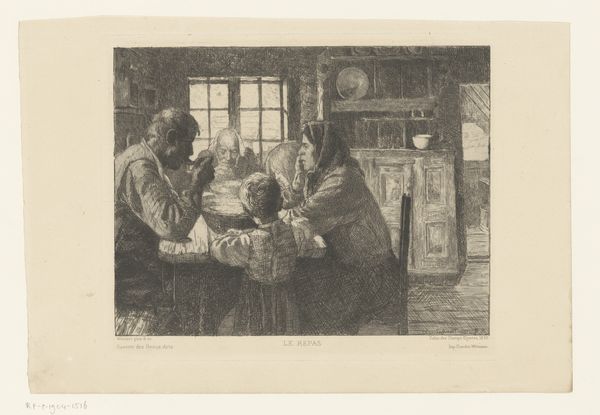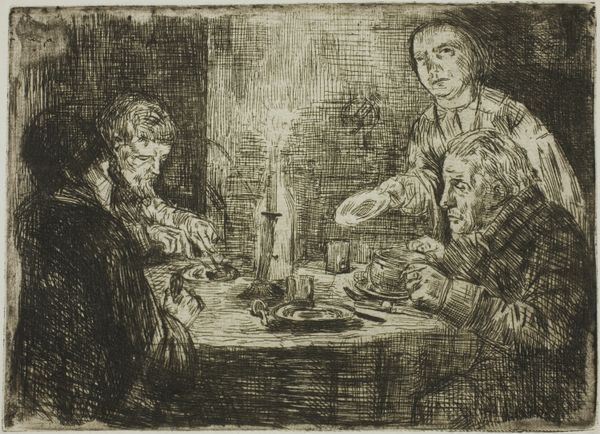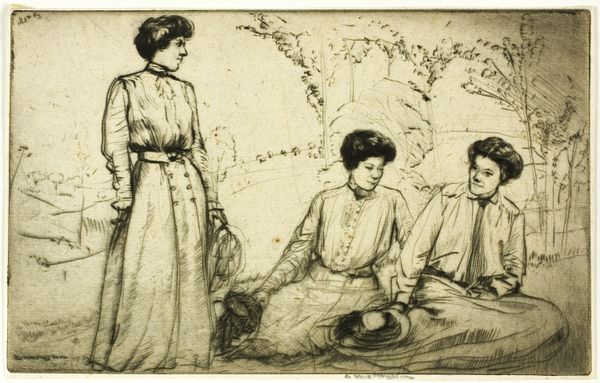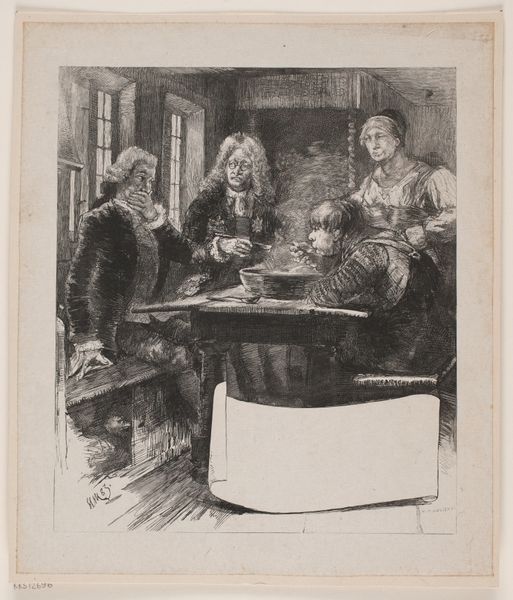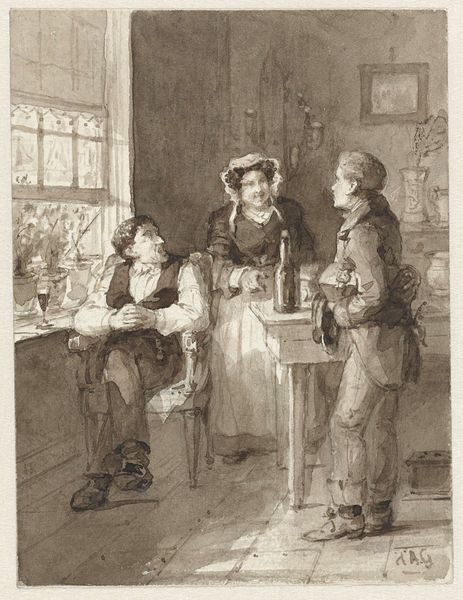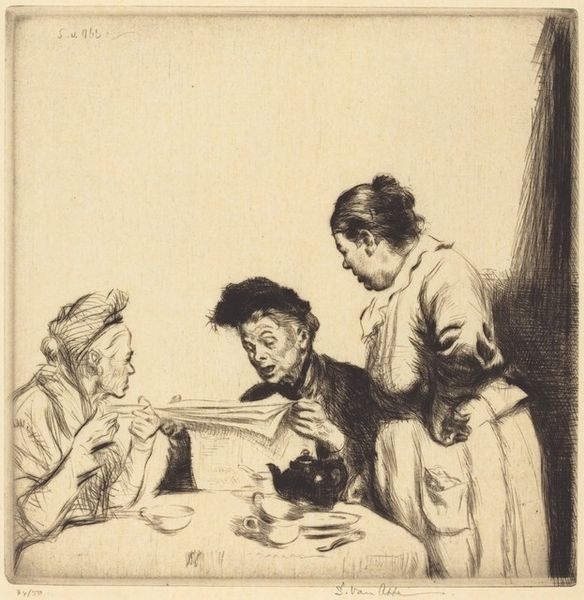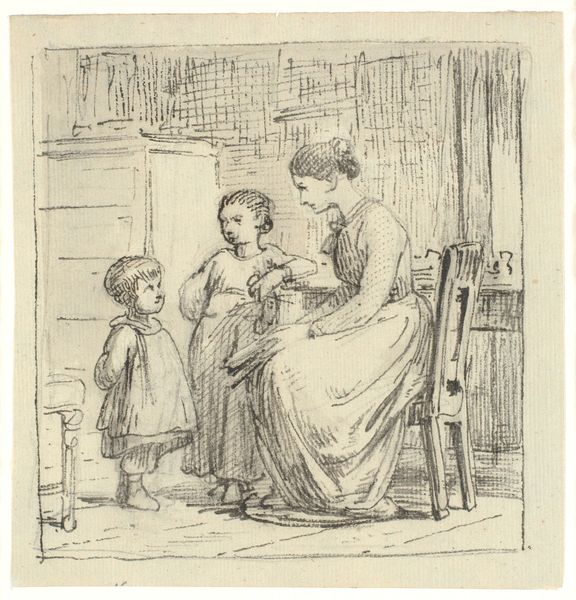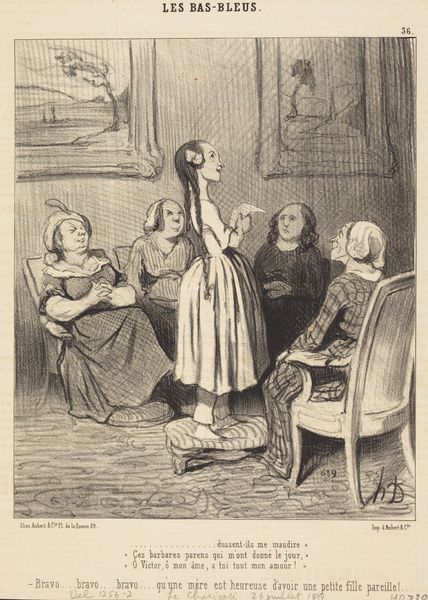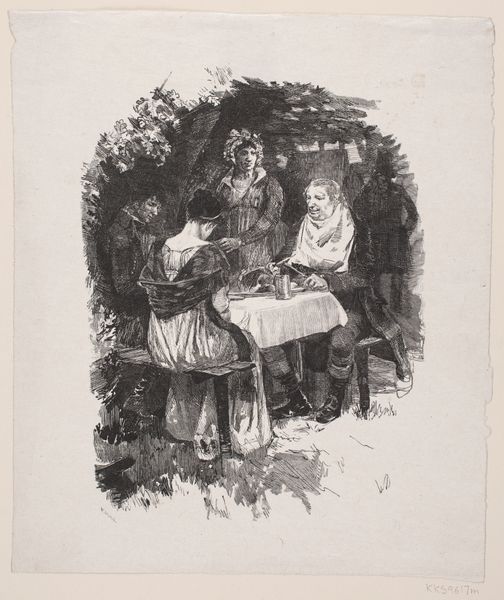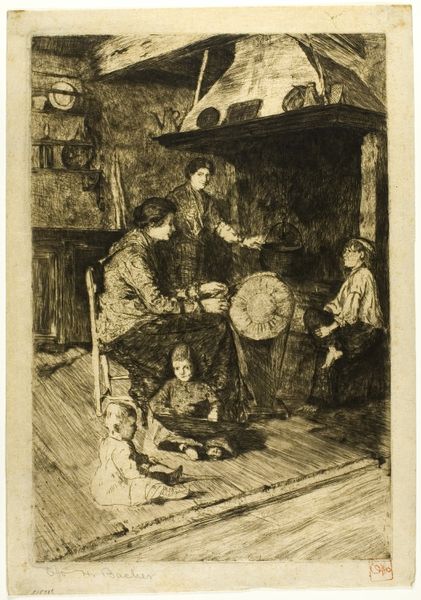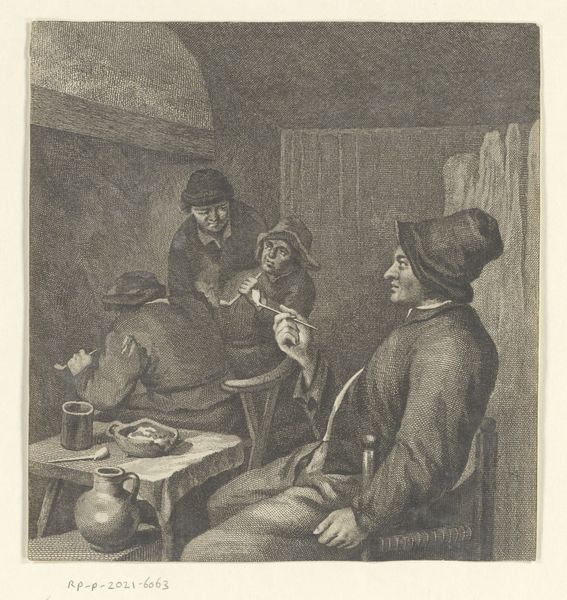
drawing, print, etching, paper, ink
#
portrait
#
drawing
# print
#
etching
#
paper
#
charcoal art
#
ink
#
black and white
#
surrealism
#
russian-avant-garde
#
genre-painting
#
realism
Copyright: Public domain
Editor: Here we have Kuzma Petrov-Vodkin's "Mother," a 1919 etching printed on paper. It's monochrome and features a woman with two children gathered around a table. There's a sense of quiet weariness, almost resignation, in her posture. What can you tell me about this work? Curator: It's essential to see this image in its historical context. 1919 was a period of immense upheaval in Russia, deeply affected by the First World War, famine, and the ongoing revolution. Consider how the role of women, particularly mothers, shifted dramatically during this era. With so many men lost to war, women were forced into roles as primary providers and caregivers, often facing immense hardship. Editor: So, the artist is reflecting real-life challenges through this portrait? Curator: Precisely. This wasn't merely a portrait of motherhood but an examination of its burden, the struggle for survival reflected in the woman's tired eyes. The scarcity, the austerity—the simple meal they are about to share tells its own story. Where do you think Petrov-Vodkin situates this work among others depicting motherhood? Editor: It seems less idealized than many mother-and-child images I've seen, almost a counterpoint. There's no glorification, only a raw honesty. Curator: I agree. By stripping away the romanticism and portraying this mother's fatigue, Petrov-Vodkin invites us to consider the socioeconomic realities shaping their lives. Editor: It reframes motherhood from a personal narrative to one interwoven with political and social struggle. I'll never look at "genre painting" the same way. Thanks! Curator: It’s fascinating how art from a century ago speaks so clearly to issues of labor and the domestic sphere even today.
Comments
No comments
Be the first to comment and join the conversation on the ultimate creative platform.
